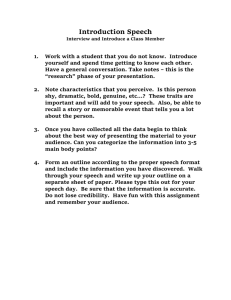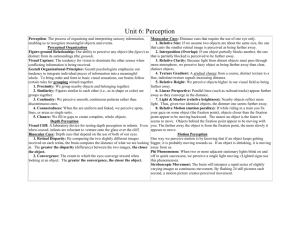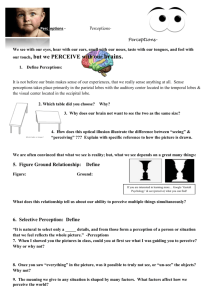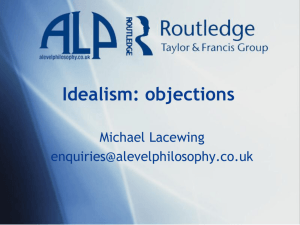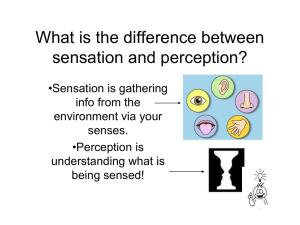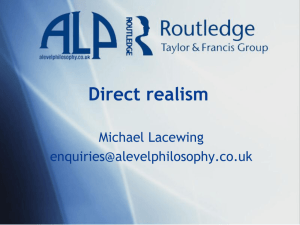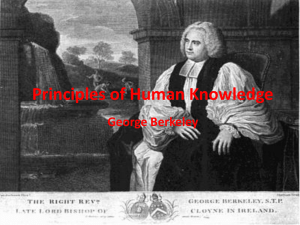Law of Familiarity The law of familiarity states when things form
advertisement
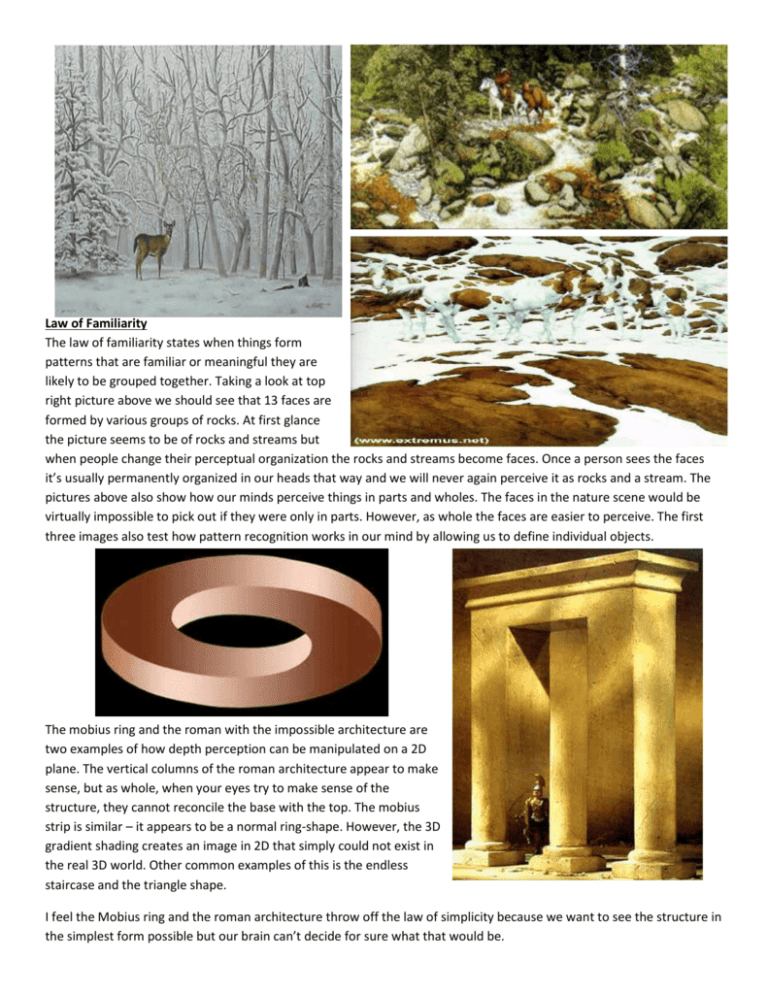
Law of Familiarity The law of familiarity states when things form patterns that are familiar or meaningful they are likely to be grouped together. Taking a look at top right picture above we should see that 13 faces are formed by various groups of rocks. At first glance the picture seems to be of rocks and streams but when people change their perceptual organization the rocks and streams become faces. Once a person sees the faces it’s usually permanently organized in our heads that way and we will never again perceive it as rocks and a stream. The pictures above also show how our minds perceive things in parts and wholes. The faces in the nature scene would be virtually impossible to pick out if they were only in parts. However, as whole the faces are easier to perceive. The first three images also test how pattern recognition works in our mind by allowing us to define individual objects. The mobius ring and the roman with the impossible architecture are two examples of how depth perception can be manipulated on a 2D plane. The vertical columns of the roman architecture appear to make sense, but as whole, when your eyes try to make sense of the structure, they cannot reconcile the base with the top. The mobius strip is similar – it appears to be a normal ring-shape. However, the 3D gradient shading creates an image in 2D that simply could not exist in the real 3D world. Other common examples of this is the endless staircase and the triangle shape. I feel the Mobius ring and the roman architecture throw off the law of simplicity because we want to see the structure in the simplest form possible but our brain can’t decide for sure what that would be. Size Constancy Perception of the size of an object does not depend solely on the size of the object’s image on the receptors. The above picture with the identically sized soldiers tricks your mind into seeing them as different heights. The converging lines cause our mind to perceive depth, and if the soldiers were in 3D space the furthest soldier would indeed be larger. However, they are merely positioned on a page, and on the page they are in fact all the same height. Likelihood Principle and Figure-Ground When most people look at the picture of the word LIFT for the first time their eyes focus on the dark splotches and the white text t is no identified as a word. It’s not until they concentrate a little harder that the word LIFT can be seen. The likelihood principle states that humans perceive the object that is most likely to have caused the pattern or stimuli they have perceived. When I first looked at the above picture the black splotched are the first thing that stands out—the figure. But after more examination the white text come into play—the ground. Now every time I look at the picture the word LIFT is the only thing I see and I physically can’t focus on just the black anymore. The above two images uses pattern recognition as well as the mind’s perception of wholes and parts. Humans tend to see the whole image first, which becomes our focus, while the details fade into the background. On further examination, though, we see that the forms making up the large faces that we perceive are actually people and objects themselves. Thus, the old man and woman facing each other don’t even really exist… they are just images we perceive from the combining of the other objects in the image.

